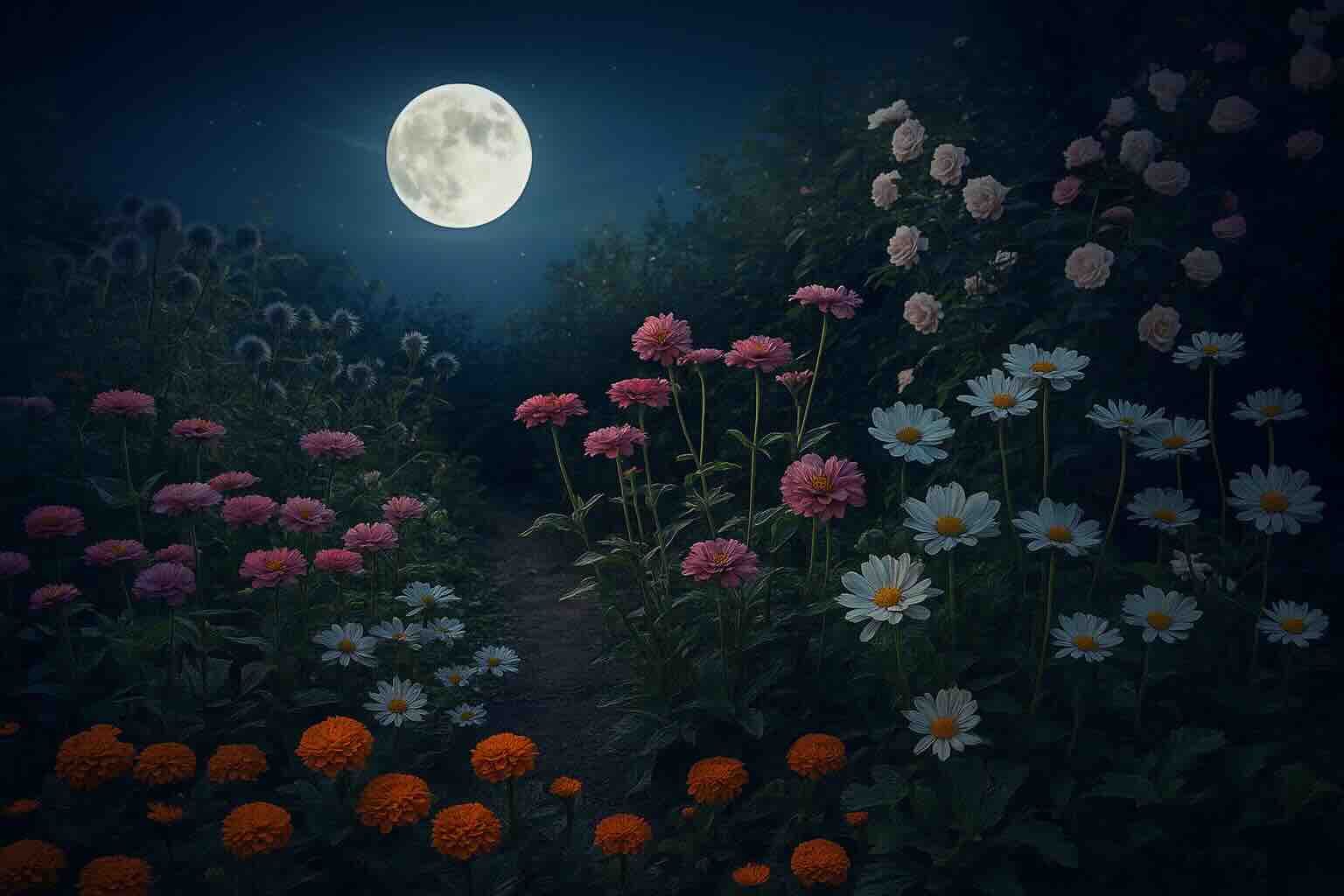Flowers have always been tied to the mysteries of the moon. For centuries, gardeners believed that the lunar cycle influenced when petals opened, when seeds sprouted, and even how long blooms lasted. Today, moon gardening continues to inspire those who want to bring both science and poetry into their gardens.
Whether you grow roses, wildflowers, or night-blooming jasmine, aligning your planting with lunar phases can add rhythm and beauty to your flower beds. Let’s explore how the moon may guide your flowers from seed to full blossom.
Why Flowers and the Moon Are Connected
The moon’s pull doesn’t only move the tides—it also affects soil moisture and plant metabolism. Just as sap rises and falls in trees, flowers respond to subtle shifts in water and light. Gardeners through history noticed patterns: flowers planted at certain phases grew taller, bloomed faster, or held color longer.
Even without hard scientific proof, the practice helps gardeners stay mindful of timing. Moon gardening encourages patience, observation, and care—values that every flower responds to.
Waxing Moon: Planting for Growth
From new moon to full moon, the waxing phase is about expansion. This is when flowers that grow above ground, especially annuals, thrive. Zinnias, marigolds, petunias, and cosmos respond beautifully to the rising lunar energy. Their stems strengthen, and leaves reach upward with vigor.
If you want fuller flowerbeds and long-lasting color, the waxing moon is the perfect time to plant seeds or transplant seedlings.
Full Moon: Blooms in Abundance
The full moon is the high point of energy. Many gardeners say this is when flowers bloom with their brightest colors and strongest fragrances. Cutting flowers during the full moon often results in longer vase life, making it ideal for bouquets and special arrangements.
Moonflowers, lilies, and roses often show their most striking blooms under the light of a full moon, giving your garden a magical glow after sunset.
Waning Moon: Root Strength and Rest
As the moon begins to fade, energy is said to move underground. This is the time for perennial flowers and bulbs such as tulips, daffodils, and irises. Their root systems develop better when planted during the waning moon, ensuring stronger returns in the following seasons.
The waning moon is also a good time to prune or deadhead spent blooms, since plants are calmer and healing happens faster.
New Moon: Planning and Soil Care
The new moon is a quiet pause in the cycle. Traditionally, gardeners avoid planting during these few days and instead focus on soil work. Adding compost, preparing beds, or laying mulch during this phase ensures that flowers will thrive once the next planting cycle begins.
Some gardeners even save seeds under the new moon, seeing it as the symbolic beginning of new growth.
Night-Blooming Flowers and the Moon
Some flowers are so tied to lunar energy that they only reveal themselves at night. Moonflowers, evening primroses, and night-blooming jasmine open their petals as the moon rises. These plants not only attract pollinators like moths and bats but also add mystery to moonlit gardens.
Planting these species during waxing or full moons enhances their blooming power and connects you directly with the night garden tradition.
Scientific Perspectives on Moon Gardening
Botanical science has shown that plants respond to light cycles and gravitational pulls. Circadian rhythms in flowers control when petals open and close, often aligning with the day-night cycle. While lunar influence is harder to measure, it aligns with natural plant rhythms that depend on water movement and light cues.
What science confirms is that mindful planting and consistent timing lead to healthier flowers. Moon gardening, even if partly symbolic, encourages these habits.
Moon Gardening for Flowers in 2025
The year 2025 brings unique lunar events that flower gardeners may wish to note. Four supermoons will light up the night sky, offering symbolic energy for planting showy blooms. Lunar eclipses, seen as moments of renewal, can inspire gardeners to introduce new flower varieties or refresh garden designs.
By aligning flower planting with these lunar events, you create a garden that feels both timeless and alive with seasonal energy.
Practical Tips for Flower Moon Gardening
1. Keep a lunar calendar. Note the phases and align sowing, transplanting, and pruning with the moon’s rhythm.
2. Observe your flowers. Take notes on bloom times, fragrance, and resilience to compare across different lunar phases.
3. Mix tradition with science. Use modern gardening techniques but enhance them with lunar timing for a fuller experience.
4. Create a night garden. Plant night-blooming flowers that glow under the moon for a truly magical effect.
Final Thoughts: A Garden That Shines with the Moon
Moon gardening for flowers is about more than planting—it’s about creating harmony between your garden and the rhythms of nature. Flowers planted with lunar cycles often feel more vibrant, and caring for them under the moonlight deepens the gardener’s connection to the earth.
In 2025, let the moon guide your flower garden. Whether you’re planting roses under a waxing crescent or harvesting bouquets under a full moon, your garden will carry both beauty and meaning—one bloom at a time.
